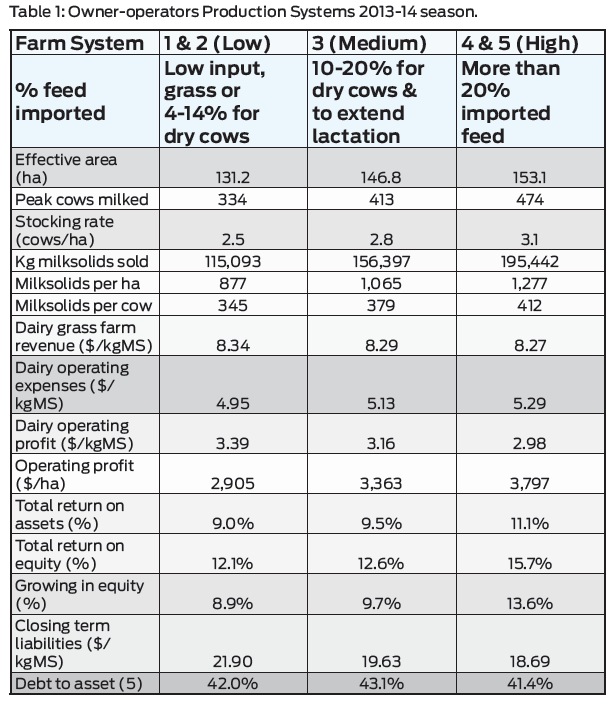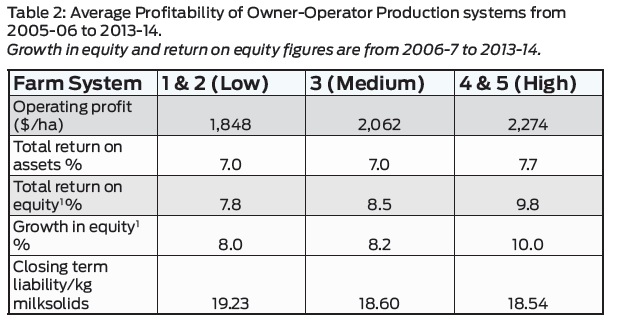Hitting heifer liveweight targets
Early December marks a key transition for many dairy farmers, as weaned replacement heifers head off-farm to grazing.
Last month saw the release of the 2013-14 DairyNZ Economic Survey, which contains a wealth of data on the average physical and financial performance of 301 randomly selected owner-operator herds during the 2013-14 season.
It shows that high input farms (system 4 and 5) milked more cows and produced more milk than low input (system 1 and 2) farms. Even though they had slightly higher expenses and a lower dairy operating profit per kgMS, high input farms had a higher operating profit per hectare because they produced more milk. They also had a greater total return on assets, lower closing term liabilities per kgMS and the lowest debt to asset ratio (Table 1) when compared to low and medium input systems.
While it is interesting to look at a single season’s data, long term average performance is even more fascinating. An analysis of the past nine seasons shows that on average, high input systems made more money and had the highest growth in equity and the lowest closing term liability. (Table 2)
Intensification is not wrecking the profitability of New Zealand dairy systems. The most profitable farm system is not necessarily the one with the lowest inputs or the lowest cost per kgMS.
There are huge variations in the profitability of all dairy farm systems. Every farmer must find the optimum balance between controlling costs and maximising milk production in their system. Whether you have chosen to operate a low, medium or high input make sure you do it well.
• Ian Williams is a Pioneer forage specialist. Contact him at This email address is being protected from spambots. You need JavaScript enabled to view it.


A New Zealand dairy industry leader believes the free trade deal announced with India delivers wins for the sector.
The Coalition Government will need the support of at least one opposition party to ratify the free trade deal with India.
Primary sector leaders have welcomed the announcement of a Free Trade Agreement between India and New Zealand.
At Pāmu’s Kepler Farm in Manapouri, mating has wrapped up at the across-breed Beef Progeny Test.
More than 150 people turned up at Parliament recently to celebrate the 20th anniversary of Horticulture New Zealand (HortNZ).
Biosecurity New Zealand says Kiwis should continue to keep an eye out for yellow-legged hornets (Vespa velutina) over the holiday season.
President Donald Trump’s decision to impose tariffs on imports into the US is doing good things for global trade, according…
Seen a giant cheese roll rolling along Southland’s roads?